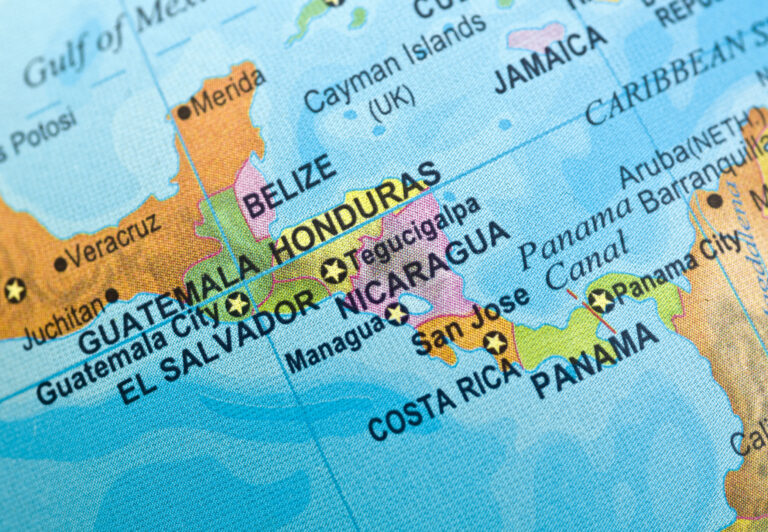Executive Summary
The potential effect of the 35% cut in U.S. funding for population control programs is estimated by gathering information from a wide variety of sources, ranging from national censuses and population estimates to interviews with former population control officials and victims of coercive population control programs. The principal findings of this study are that:
- Increases in population control pledges by other countries will largely offset the U.S. cuts.
- The demographic consequences of the U.S. cuts will be negligible. Claims that numbers of abortions and maternal deaths will increase as a result are greatly exaggerated, if not entirely spurious.
- Human rights abuses associated with population control programs, such as coerced abortion, sterilization, and contraception, will decline.
- The U.S. will reap diplomatic benefits by reducing its involvement in programs which often violate the rights of poor women, offend the sensibilities of underdeveloped countries, and raise the spectre of cultural imperialism, if not outright neocolonialism.
Background:
In January 1996, the U.S. Congress agreed upon, and President Clinton signed into law a 35% cut in U.S. funding for population control programs. Under the Balanced Budget Downpayment Act passed in January, Rep. Chris Smith's amendment reinstating the Mexico City Policy and withholding funds from UNFPA was dropped from the FY 1996 Foreign Operations appropriations bill. Instead, a three-part agreement was reached that:
1. No appropriated funds could be spent for population control activities (including contributions to UNFPA) before July 1, 1996, unless the expenditures were specifically authorized by law;
2. After July 1 (if there is no authorization), 65% of FY 1995 funding levels could be spent during the remainder of FY 1996 and through FY 1997 (15 months);
3. No more than 1/15th of the total amount of funds available could be spent each month.
The debate over the likely consequences of such cuts involves the gathering and interpretation of a wide variety of demographic, societal, and human rights data. This information comes from national censuses and population estimates as well as from interviews with former population control officials and victims of coercive population control programs. The following summary report describes the principal demographic, social, and human rights consequences of the reduction in funding. More detailed information is available upon request.
Worldwide Population Control Spending will not Decline Significantly:
It must be pointed out at the outset that a number of nations, including Great Britain, Australia, Belgium, and others, have recently increased their funding of population control programs, and that these increases have in large part offset the U.S. cutback. Static analyses that do not take this dynamic into account, but instead rely on simplistic, straight-line projections, are inherently inaccurate and misleading. A recent example of such a static, and hence flawed, analysis is the study produced by the Alan Guttmacher Institute (AGI) addressing the same topic as the current study.
The Demographic Consequences will be Muted:
As pointed out above, it is impossible to estimate the demographic impact of the U.S. funding cut without taking into account the increase in the amount of population control funds pledged by other countries. Since the UNFPA and other population organizations continue to solicit such contributions, it is difficult to determine with any accuracy the level that population control spending will reach during the coming year, but it is reasonable to assume that it will not decrease by more than 10% over 1995. While AGI's estimates are flawed in a number of respects, correcting for this 25% error in funding levels alone would reduce its predicted increase in births, abortions, and maternal deaths by 70%.
The effect of a 10% reduction in worldwide population control spending on birth rates, abortion rates, and female mortality rates is difficult to assess, but there is reason to believe that the effect on abortion rates and female mortality rates would be negligible.
- Birth rates may slightly increase, although this effect would be muted by the widespread availability of contraceptives, both modern and traditional, in Third World countries. Even if one assumes, as does AGI, that 2.0 million women would turn to traditional methods or use no contraceptive at all, the pregnancy rate of 65% that AGI presupposes is far too high. According to AGI's own data, the probability of pregnancy after one year using no contraceptives is only 44.7%, while with traditional methods such as Ârhythm' and withdrawal it is 23% and 15.4%, respectively. Thus the actual pregnancy rate would be perhaps 32%, or half of what AGI assumes.
- The number of surgical sterilizations performed would be reduced. Performed in the often unsanitary setting of a Third World clinic, more often than not in assembly-line fashion, such operations can be fatal. Decreasing the mortality rates from surgical abortion would partially offset the additional deaths due to pregnancy.
- Maternal mortality rates in developing countries are much lower than the figure given by the AGI of 4.1 per 1,000 women. The actual figure for the 116 developing nations of the world, taken from 1994 U.N. data, is 2.77. (See attached ÂAnalysis of Maternal Mortality Rates in the 116 Developing Counties') In other words, the maternal mortality rate used by AGI is as much as 50 percent too high.
- The demographic consequences of the U.S. cuts will therefore be negligible.
Human Rights Abuses Associated with Population Control Programs will Decline:
Coercion—even violence—in the name of 'family planning' has occurred in at least 35 developing countries to date. The best-known instances of coercion have occurred in China and India, but coercive population control is far more common in the Third World than is generally realized:
- In Salvadorian hospitals, clinics and fieldworkers are given monthly targets for the number of sterilizations they are to carry out, and women are sterilized without their knowledge or consent.
- Many Cambodian women have been told that they cannot marry unless they first receive an injection of the abortifacient Depo-Provera.
- Black South African women are given Depo shots by health care workers who tell them that the injections will "help their milk supply," and Black women cannot apply for jobs unless they present a family planning card showing that they are on some type of birth control. This widespread abuse has not ended with the demise of apartheid- in fact; there are indications that the architects of South Africa's coercive family planning programs will broaden their scope to target the "colored" (mixed race) population as well.
- In the 1970s, the Indonesian military was employed in a drive to get as many women as possible fitted with IUDs (half of whom were directly coerced), and school teachers were told that they would not be paid unless they were on birth control.
- In 1983, Bangladeshi Army troops forcibly rounded up women with three or more children and trucked them to camps for sterilization, and the following year, during widespread flooding, foreign food and medical aid was withheld from destitute women until they agreed to be sterilized.
In the implementation of population control programs, the theory of "gradiated coercion" is employed. By this is meant the application of successively greater degrees of coercion until the target population complies with the goals of the program. This process has been explicitly described by population control advocates Bernard Berelson and Jonathan Lieberson. "The degree of coercive policy brought into play should be proportional to the degree of seriousness of the present problem and should be introduced only after less coercive means have been exhausted," Berelson and Lieberson write. "Thus, overt violence or other potentially injurious coercion is not to be used before noninjurious coercion has been exhausted." Note that coercion is not proscribed, but merely reserved until such time as other inducements to compliance have proven ineffective.
There are more than one hundred other documented cases of compulsion associated with family planning programs from thirty other countries. Such violations of human rights are not isolated instances, but are evidence that force, and the threat of force, are in integral part of population control programs worldwide.
The U.S. will Gain by Reducing its Involvement in Programs which Egregiously Violate Individual and Family Rights, as well as National Sovereignty.
Population control programs not only routinely violate the rights of poor women, they also offend the sensibilities of underdeveloped countries, and smack of cultural imperialism, if not outright neocolonialism.
In underdeveloped countries, power is often concentrated in the hands of a few individuals and government agencies, which are easily swayed by promises of money and assistance. There are rural clinics in the Philippines where contraceptives—paid for by U.S. taxpayers—are piled to the rafters, but there are no antibiotics or vaccines to be found? There are poor men and women in India and other countries who are bribed or coerced into sterilizations they quickly come to regret, or did not want in the first place? There is increasing resentment in Third World countries over demands by the wealthy First World that they reduce their birth rates.
It is Time for a Comprehensive Reexamination of Population Control Programs.
Ideologically driven movements are notoriously ill equipped to examine their own assumptions. The population control movement, which is based on the conjecture that the world has—or will soon have—more people than it can reasonably sustain, is no exception. It accepts as an article of faith the existence of something called "overpopulation." It claims that it is principal cause of hunger, poverty, and environmental degradation. Finally—frightening those of us who are familiar with China's one-child policy—it zealously urges Third World governments to adopt measures to force down birth rates.
Outside of the "movement" itself all these notions are being called into question. Does "overpopulation" demand population control activism? Listen to Nicholas Eberstadt of the American Enterprise Institute: "[T]here is no workable demographic definition of Âoverpopulation'," he states flatly. "The term, though often used as if it had a fixed meaning, cannot be described unambiguously through reference to any combination of demographic variables. . . . Inadequate incomes, poor health, malnutrition, overcrowded housing, unemployment—images such as these are conjured up by the notion of overpopulation, but they are really images of poverty. . ."
Does population growth leads to ever-increasing hunger, poverty, and environmental degradation? Consider a recent study by Julian Simon and Karl Zinsmeister, which concludes that the success of a country's development depends largely on its political and economic system, not on the size or rate of growth of its population. As far as the relationship between population and development is concerned, Simon and Zinsmeister maintain, "[it] is the reverse of what population-explosionists argue: it is not that slower population growth brings prosperity, but rather that prosperity brings slower population growth."
Given that the population controllers may have gotten it all wrong, is it wise for the U.S. to urge Third World governments in no uncertain terms to restrict their peoples' fertility? Does it make sense to ship massive amounts of contraceptives around the world? Do these programs empower poor people—as their proponents claim—or simply make society's have-nots vulnerable to yet another form of official exploitation and abuse?
Before we continue to pour hundreds of millions of dollars into population programs, we should first determine whether such programs help or hurt their supposed beneficiaries. And until we can answer this question satisfactorily, we should cut off, not merely cut back, funding.
For if Eberstadt, Simon, Zinsmeister and company are correct, the real danger to men, women, and children of the Third World may not be "overpopulation" at all, but rather alarmist visions of overpopulation. The notion that people are somehow social, ecological, and economic nuisances is a pernicious one, predisposing governments to treat their own citizens as a form of pestilence. Instead of trying to lift their poor out of poverty, governments instead try to reduce their numbers. Authentic economic development is neglected, and everyone's freedoms are put at risk.










